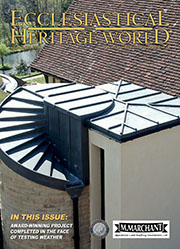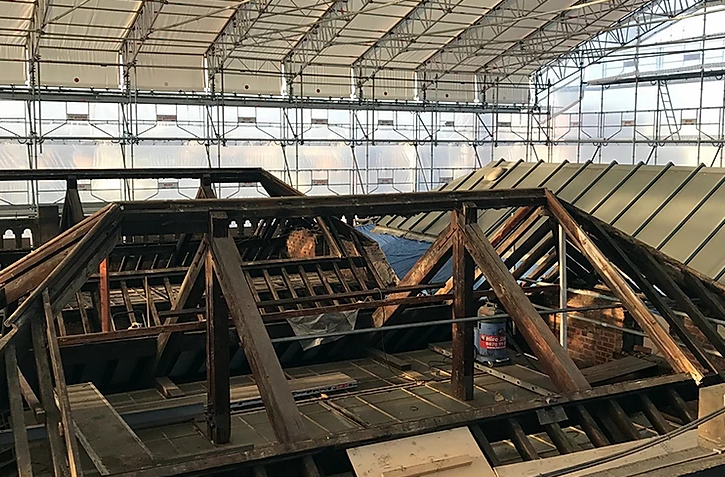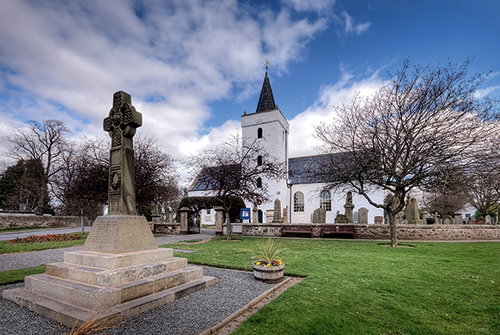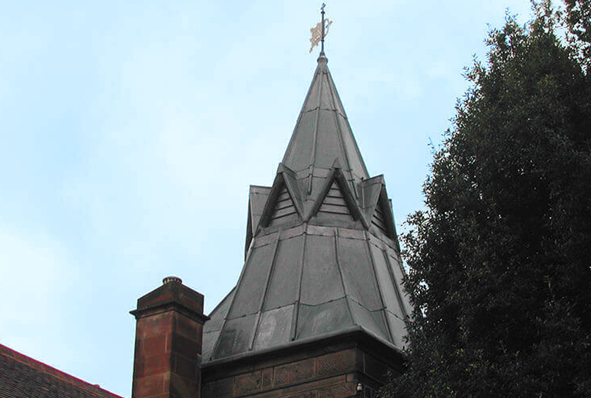Heritage Roofing
Heritage roofing - maintaining our iconic buildings
The UK is home to some of the most iconic buildings in the world, from stunning churches and cathedrals to historic stately homes. Each and every one of these remarkable feats of architecture requires regular maintenance to ensure they remain in the very best condition, allowing them to be enjoyed for generations.
Lightning Protection
When lightning strikes are you protected against this act of God?
The issue of lightning protection in churches is one that has exercised this publication for many years. In this four-part series of spotlights on the issue we will be revisiting various aspects of the subject, beginning with an overview of current thinking.
Traditional Lime
Lime: it’s better for buildings – and for the environment
It is now fairly well known that cement is not good for old buildings and that lime mortar should be used. But why? What are the advantages and what are the disadvantages? In order to begin to answer those questions it is necessary to understand the nature of traditional building, the process by which buildings used to be built, and how it differs from modern construction, the process by which we build today.
Audio Visual
Audio visual equipment in church buildings
This guidance is issued by the Church Buildings Council under section 55(1)(d) of the Dioceses, Mission and Pastoral Measure 2007. As it is statutory guidance, it must be considered with great care. The standards of good practice set out in the guidance should not be departed from unless the departure is justified by reasons that are spelled out clearly, logically and convincingly.
Read More...
CRE Events
All change at CRE: the UK’s ‘ideal church show’
The Christian Resources Exhibition (CRE), the UK’s largest church-related show, has changed hands in its 40th year and has been taken over by Quartz Business Media.
Insurance
You need to ensure that reasonable precautions are in place at your church to keep it safe for those who use it. To do this, you need to think about what might cause harm to people.
You will then need to decide if the precautions already in place are adequate. If they are not, you may need to identify further action to prevent any danger. When done formally, this is known as a risk assessment.
LPOW Grants
£23 million government package to support restoration of thousands of listed places of worship
Heritage Minister Sir Chris Bryant has announced that the Listed Places of Worship Grant Scheme will be extended into the next financial year, providing £23 million so that thousands of historical buildings, including churches, synagogues, mosques and temples, can carry out restoration work.
Lead Roofing
Lead is one of the oldest materials in the roofing industry and is still commonly used throughout the world today.
Lead roofing is a traditional roofing method which has been used in the industry for hundreds of years, and is therefore proven to be extremely reliable. Lead roofing, and sand-cast lead, in particular is ideal for old buildings such as churches or historical renovations, whereas milled lead roofing is a mass-produced alternative, used for precision and accuracy in homes and commercial buildings alike.
Home
The Challenge of Greening our Heritage
Current trends in construction show a shift from new build and an increase in the maintenance, repair, retrofitting, refurbishment and conservation of building stock. But with a knowledge base that lies in new construction technology, and education that is primarily focused on new build, there is a question whether the industry has sufficient expertise to meet these new challenges.
The Chartered Institute of Building (CIOB) along with ConstructionSkills, English Heritage and the Good Homes Alliance are working on an initiative aimed at sharing knowledge about traditional buildings and their environmental impact between conservation, mainstream and academic communities.
As part of this important initiative the group convened a knowledge transfer workshop to discuss the challenge of radically improving the thermal performance of existing building stock. The event highlighted that the actual thermal performance of buildings can be very different from what is currently understood. It also revealed some relatively easy and inexpensive means of making buildings more thermally efficient.
Alan Crane, Vice President of the CIOB and member of the Group commented, “How we green our existing building stock is a huge part of creating a sustainable future. It is vitally important that industry equips itself to face climate change armed with good knowledge and understanding, and professional institutions must play their part in making this happen.”
This view was reinforced by John Edwards of the Conservation Department at English Heritage, “We have the oldest building stock in the western world, with more than 20% being traditionally built with solid walls. You may therefore expect the UK building industry to have developed the necessary expertise to maintain and improve them properly, but research suggests otherwise and we quickly need to sort this out with appropriate expertise and skills, especially in light of retrofit proposals.”
Seamus Hanna of Construction Skills who chaired the event emphasised that pooling all knowledge must be beneficial, but there must be a means of getting it to those that need it: “Improving existing education and training is essential if we are to repair, maintain and retrofit buildings properly”, claimed Hanna.
Neil May, Chair of the Good Homes Alliance said; “There are huge gaps in our understanding about how to retrofit old buildings in a healthy and effective way. Research is urgently needed if we are to avoid taking very harmful and expensive risks.”
Whilst there was a heavy focus on making buildings greener, it was also emphasised that maintaining buildings so that they last as long as possible and deliver optimum performance was the most essential ingredient of all, but problems were noted about the industry’s ability to undertake this properly. Trevor Francis of Swansea Metropolitan University commented; “Even walking through central London and looking at some magnificent buildings you can see how poor we can be at maintaining buildings, so where does that leave us with more complex issues such as retrofit?”




















